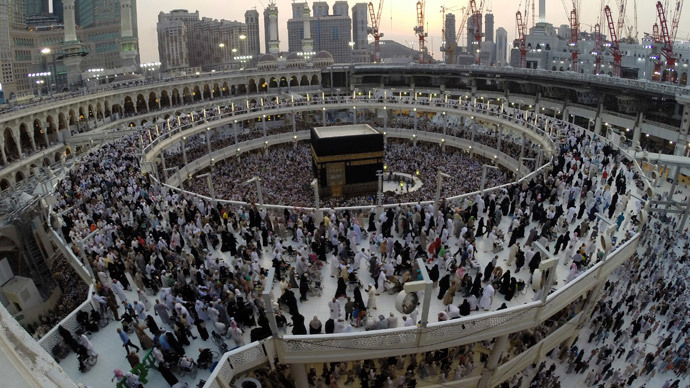Global Muslim population to surpass Christians by 2070 – study

By 2050, followers of Islam will match those following Christianity, with the number of Muslims surpassing Christians globally by 2070, the Pew Research Center projects, citing current differences in fertility rates, youth populations and conversions.
The study said that Christianity was the world’s largest religion in 2010, with an estimated 2.2 billion followers representing nearly a third (31 percent) of all 6.9 billion people on Earth. Islam had 1.6 billion followers representing 23 percent of the global population.
READ MORE:Indiana lawmakers alter 'religious freedom' law under public pressure
If current demographic trends continue, however, Pew said that by mid-century, the Muslim population is projected to increase by 73 percent and make up 30 percent of the world’s population (2.8 billion). Christians will make up 31 percent of the population (2.9 billion).
“The main reason Muslims are growing not only in number but in share worldwide is because of where they live,” Alan Cooperman, Pew's director of religion research, told NPR. “Muslim populations are concentrated in some of the fastest-growing parts of the world.”
Tweeters commenting on @IndianExpress article re future religious demographics, here's the @PewReligion report: http://t.co/aDwgpHIDtm
— Alyssa Ayres (@AyresAlyssa) April 2, 2015
The reason for this trend is tied to several factors: Fertility, youthful populations and people switching faiths. The study said Muslims have the highest fertility rate, with an average of 3.1 children per woman – compared with Christians at 2.7 children per woman.
READ MORE:NYC public schools to close for two Muslim holidays
In 2010, more than quarter of the world’s total population was under the age of 15. The highest percentage of children younger than 15 years belong to the Muslim population, which made up 34 percent compared to Hindus at 30 percent and Christians at 27 percent.
These bulging populations are among the reasons Muslim are projected to grow faster than Hindus and Christians.
We project Christians in #China in 2050 at 220 million, more religious switching than #PewReligion@CSGCpic.twitter.com/CUov3zsV3s
— Todd M Johnson (@drtoddmjohnson) April 2, 2015
The growth in these dominant religions is also partly attributable to where the booms are happening. For instance, India will displace Indonesia as the home of the world’s largest Muslim population, even with its Hindu majority, and Pew says, “Four out of every 10 Christians in the world will live in sub-Saharan Africa.”
Absent from the report, because the data wasn't available, is an inclusion of how China’s population will affect these trajectories. If China’s 1.3 billion population was included, which currently is five percent Christian, and more Chinese were to switch to Christianity it could have an effect on the number of Christians tabulated worldwide.












